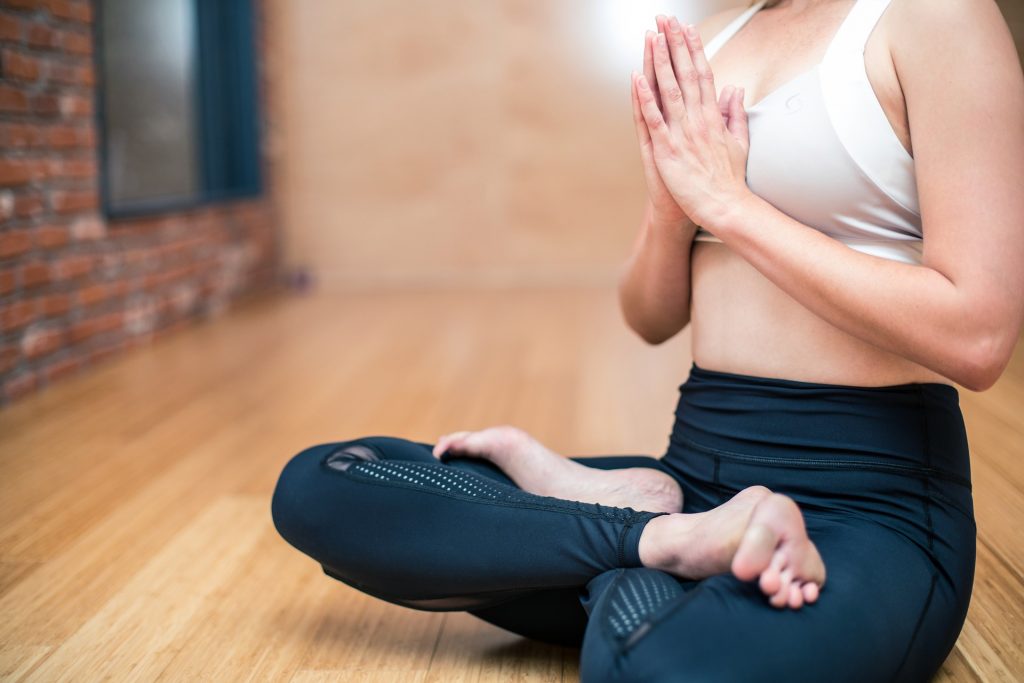A hectic job, home life, and society in general – it’s no surprise that numerous people are looking for ways to balance their work-life with their personal life; their mental health with their physical health but it just seems that the days are getting shorter and peoples to-do lists are getting longer. That is why more people are turning to the ancient practice of meditation to give them a healthier mind and body.
While meditation is not the most strenuous of activities for exercise, it is an excellent stress reliever that will boost your energy. People who regularly practice meditation have shown an increase in their immune system, lower blood pressure and a more positive outlook on life. That is because this practice ultimately reconnects you with yourself and helps you improve your focus. This focus can then be directed at a more intense workout routine. It will also help you in your personal and work life as it removes triggers for stress and anxiety, improves daily focus (which does wonders for your mental health), and it allows a person to connect with themselves ultimately.
Want to know a bit more? Want to learn some tips that will help you achieve a healthy mind and body through the practice of meditation? Below are helpful suggestions to start shedding that stress.
The Setup and the Tips
When first starting meditation, you should set up a space in which you are going to be meditating. You don’t want to try a new routine with chants to direct your focus if you are surrounded by distractions.
Step One: Choose a quiet room that is away from other people in your household, so the noise they create doesn’t reach your ears and one that doesn’t receive a lot of foot traffic, so you don’t have to worry about someone interrupting you accidentally.

Step Two: Remove distractions from within the room. If there is a television – leave it off and place the remote in another room to prevent temptation. Don’t bring in your laptop, tablet, or smartphone (unless you absolutely need it for an alarm clock).
Step Three: Dim the lights to a soft glow or use the natural light filtering through the window (covered by a semi-sheer curtain is the best bet). Place comfortable pillows on the floor for seating and get into a position that is comfortable for you. Meditation routines are no good if you are distracted mentally by the position of your body.
Step Four: Use an essential oil diffuser to coat the air with a light scent of something relaxing. Choosing the right scent can help relax your mind, many people feel that Lavender is one of the most relaxing scents you can get, as proven in numerous studies. Lavender relaxes the mind and allows all that tension to float away. Not the biggest fan of Lavender? Then choose a scent that will invigorate you, such as peppermint, or a scent that invokes a happy memory, such as cinnamon, for the best results Use only pure essential oils in your diffuser like the ones recommended here.
Step Five: Give yourself time to adjust to a meditation routine. People who are just beginning to practice will not be able to maintain the focus required for long periods of time; so, set your alarm for five minutes. Once you achieved five minutes of total focus and relaxation, then start adding time to your routine until you are comfortable. Only go up by a couple minutes at a time for the best results.
Step Six: Don’t be hard on yourself. Meditation is an art form in a sense, and it requires a major focus. You didn’t do that hot on your first one? Then try again and allow yourself to fail without repercussions. Masters of meditation didn’t become that way overnight, and neither will you – which is perfectly okay!
Conclusion
Meditation routines can vary from chanting to internal thought processes. Some people use yoga combined with meditation to give their routines an overall body experience. Others combine various aspects from numerous routines to customize one for them. Choose whatever works for you and will reduce the amount of stress, anxiety, and tension in your body.
Try out different forms of meditation and eliminate the aspects that don’t work right for what you want from your meditation routine. Not sure how to start? Research the various routines and results they could provide. If you have a local center where people gather for public yoga classes, contact them. They might have a list of meditation practitioners or be able to direct you in the right direction for someone. Some places even offer a meditation class, but only those who can focus their mindfully and ignore all distractions would benefit from those.
